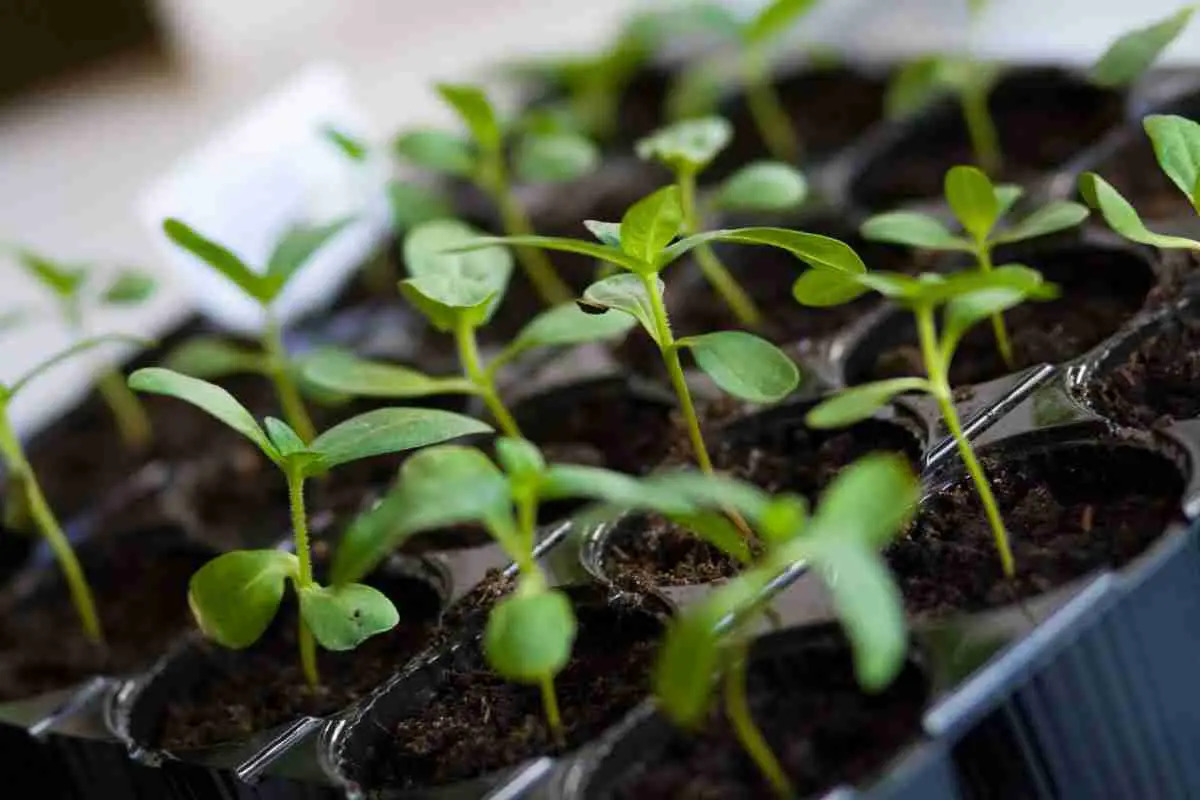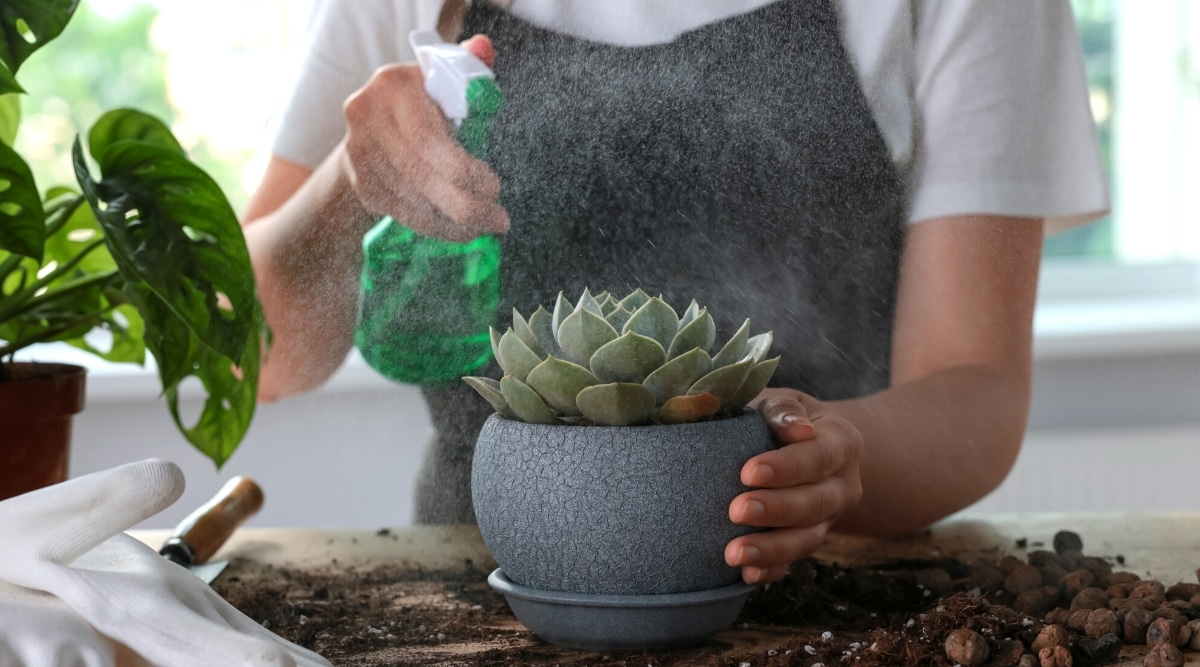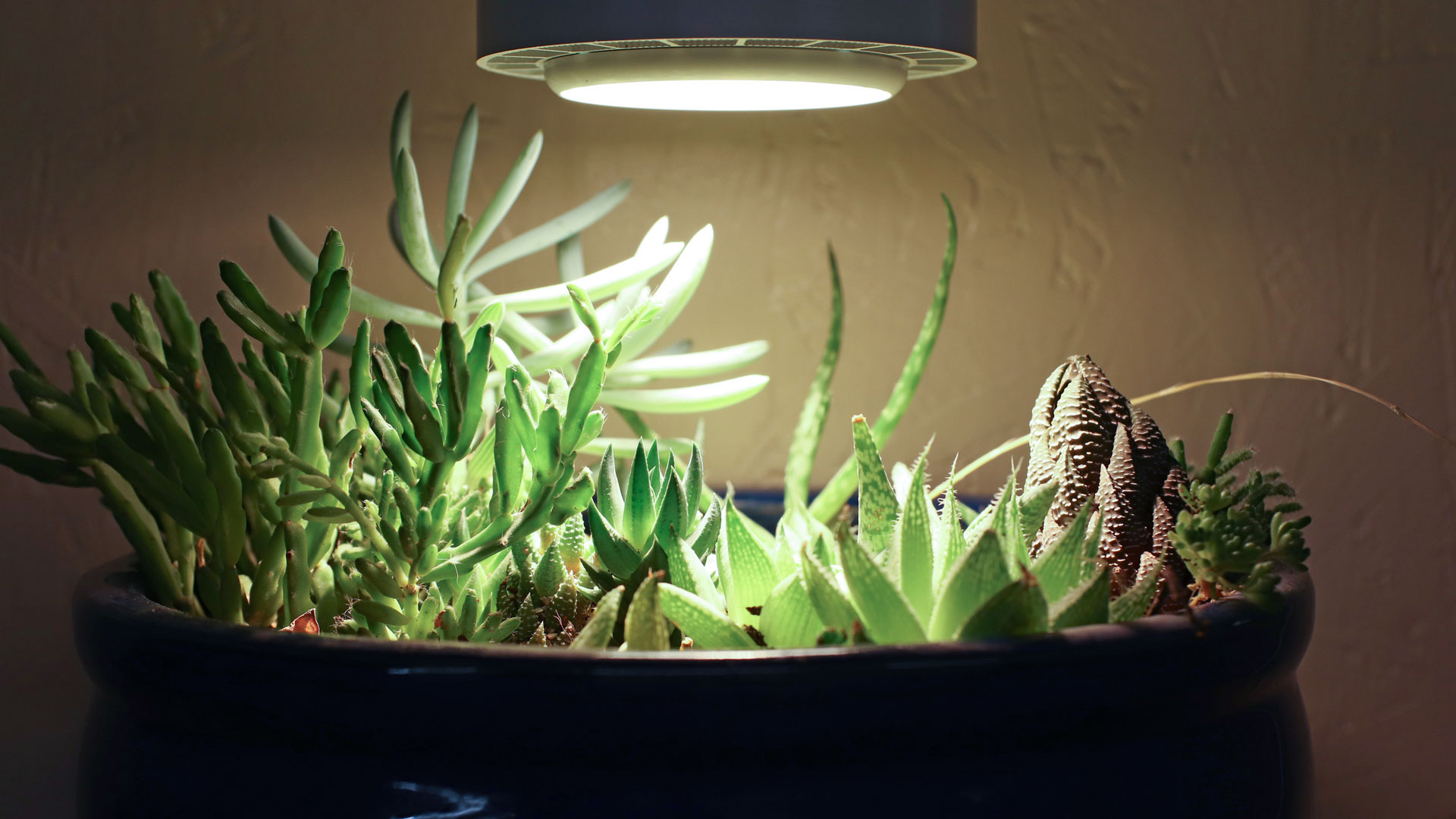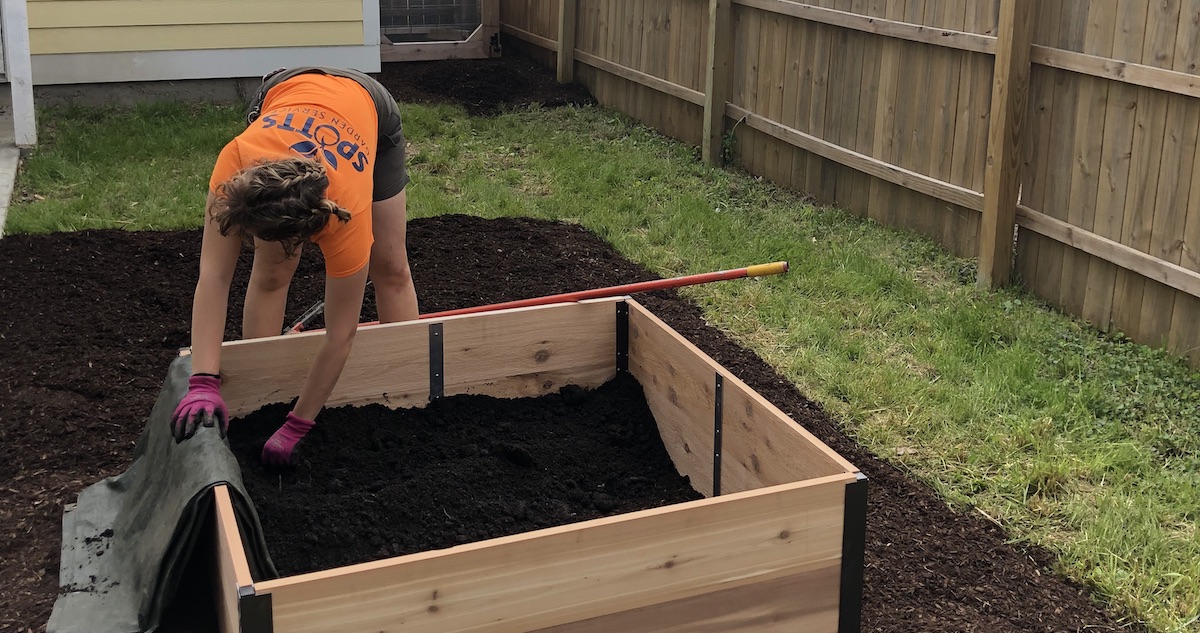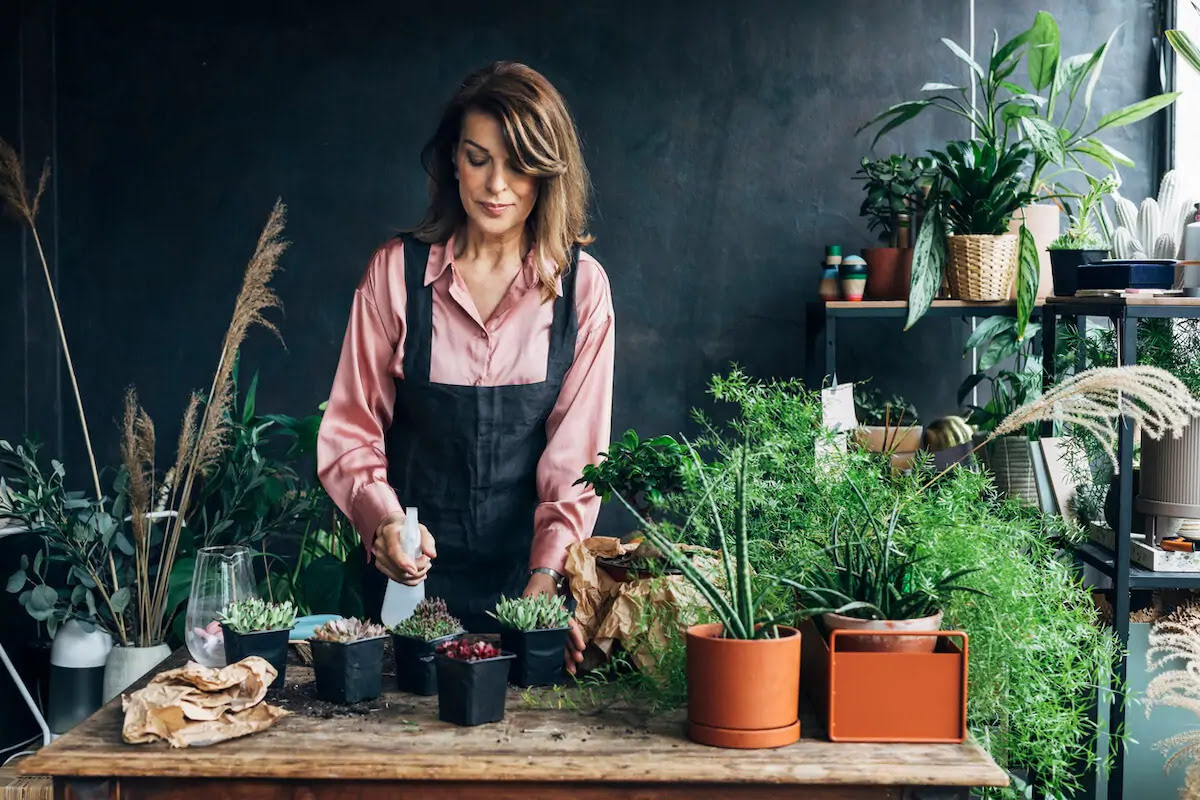Home>Gardening Techniques>Plant Care>How Much Sunlight Do Herbs Need


Plant Care
How Much Sunlight Do Herbs Need
Modified: January 29, 2024
Find out how much sunlight herbs need for optimal plant care. Ensure your herbs thrive by understanding their specific sunlight requirements.
(Many of the links in this article redirect to a specific reviewed product. Your purchase of these products through affiliate links helps to generate commission for Chicagolandgardening.com, at no extra cost. Learn more)
Table of Contents
Introduction
Welcome to the wonderful world of plant care! If you’re a plant enthusiast or someone looking to embark on a green thumb journey, you’ve come to the right place. Taking care of plants, especially herbs, is not only rewarding but also an opportunity to connect with nature and enhance your living space.
One of the key elements in successfully taking care of herbs is providing them with the proper amount of sunlight. Just like humans, herbs have their own unique preferences and requirements when it comes to sunlight exposure.
In this article, we’ll explore the various sunlight needs of herbs and provide you with the knowledge you need to ensure their optimal growth and health. Whether you have a sunny garden, a balcony, or even a sunny windowsill, understanding the sunlight requirements of your herbs will help you create the perfect environment for them.
So, let’s dive in and discover how much sunlight your herbs need!
Understanding Sunlight Needs for Herbs
To determine the sunlight needs of your herbs, it’s essential to understand their natural habitat and the role sunlight plays in their growth and development. Most herbs originate from sunny regions where they receive ample amounts of sunlight throughout the day.
Sunlight is crucial for herbs as it provides energy for photosynthesis, the process through which plants convert light into chemical energy to fuel their growth. It also affects their overall health, flavor, and aroma. Understanding the different sunlight needs for herbs will help you create the ideal conditions for their growth.
The three main categories of sunlight needs for herbs are full sun, partial sun, and shade-loving herbs. Let’s explore each category in more detail.
- Full Sun Herbs: Full sun herbs require direct sunlight for at least 6-8 hours a day. They thrive in bright and sunny conditions. Some examples of herbs that fall into this category are rosemary, thyme, sage, and lavender. These herbs usually have woody stems and are adapted to withstand intense sunlight and heat.
- Partial Sun Herbs: Partial sun herbs can tolerate some shade and require 4-6 hours of direct sunlight per day. They prefer a balance between sunlight and shade. Examples of herbs in this category include mint, cilantro, dill, and chives. While they can handle some shade, they still need a significant amount of direct sunlight to thrive.
- Shade-Loving Herbs: Shade-loving herbs prefer minimal direct sunlight and thrive in areas with dappled or filtered light. They need around 2-4 hours of direct sunlight per day or bright indirect light. Some herbs that fall into this category are parsley, lemon balm, and coriander. These herbs are more delicate and can suffer from sunburn or stunted growth if exposed to too much direct sunlight.
Understanding the sunlight needs of your herbs is essential for their overall well-being. It’s important to note that these guidelines may vary depending on your climate, so it’s always best to observe your herbs and adjust their sunlight exposure accordingly.
Now that we have a basic understanding of the sunlight requirements for herbs, let’s explore the factors that can affect their specific sunlight needs.
Factors Affecting Herb’s Sunlight Requirements
While the general sunlight needs of herbs can be categorized as full sun, partial sun, or shade-loving, it’s important to consider that certain factors can influence an herb’s specific sunlight requirements. Understanding these factors will help you determine the ideal amount of sunlight for your herbs.
1. Climate: Different herbs thrive in different climates. For instance, Mediterranean herbs like rosemary and thyme prefer hot and sunny climates, while herbs like mint and parsley can tolerate cooler temperatures and some shade. Consider the climate of your location when determining the sunlight needs of your herbs.
2. Maturity: The stage of an herb’s growth can also affect its sunlight requirements. Young, newly planted herbs may need more protection from direct sunlight until they establish strong root systems. As they mature, they can typically tolerate more sunlight. Keep an eye on your herbs’ growth and adjust their sunlight exposure accordingly.
3. Soil Moisture: The moisture levels in the soil can impact an herb’s ability to tolerate sunlight. Herbs growing in dry soil may need more shade to avoid dehydration, while those in moist soil can handle more sunlight. Ensure your herbs are planted in well-draining soil and adjust their sunlight exposure accordingly based on the soil moisture levels.
4. Plant Variety: Each herb variety may have slightly different sunlight requirements. While most herbs within the same category share similar preferences, it’s always beneficial to research the specific variety you’re growing to understand its unique needs.
5. Microclimate: The microclimate in your garden or growing area can also impact an herb’s sunlight needs. Factors such as nearby structures, trees, or reflective surfaces can create shade or intensify sunlight. Observe the specific growing conditions in your planting area and make adjustments as necessary.
By considering these factors, you can fine-tune the sunlight exposure for your herbs, ensuring they receive the right amount of light to thrive. Remember that herbs are adaptable and can tolerate some variance in their sunlight needs, so don’t be afraid to experiment and adjust their exposure based on their response.
Now that we understand the factors that influence an herb’s sunlight requirements, let’s explore the specific herbs that fall under each sunlight category, starting with full sun herbs.
Full Sun Herbs
Full sun herbs are those that thrive in bright and sunny conditions, requiring at least 6-8 hours of direct sunlight per day. These herbs have adapted to withstand intense sunlight and heat, making them ideal for gardens and areas that receive ample sunshine.
1. Rosemary (Rosmarinus officinalis): Rosemary is a woody perennial herb known for its fragrant aroma and needle-like leaves. It requires full sun to grow vigorously and produce flavorful leaves. Plant rosemary in a well-draining soil and ensure it receives plenty of sunlight throughout the day.
2. Thyme (Thymus vulgaris): Thyme is a versatile herb used in a variety of dishes. It requires full sun to develop its distinct flavor and aroma. This herb thrives in well-drained soil and should be placed in an area that receives ample sunlight throughout the day.
3. Sage (Salvia officinalis): Sage is an herb with velvety leaves and a savory flavor. It prefers full sun to develop its essential oils and intense flavor. Plant sage in a well-draining soil in a sunny spot to ensure its healthy growth.
4. Lavender (Lavandula spp.): Lavender is a fragrant herb that blooms with beautiful purple flowers. This herb thrives in full sun and well-draining soil. Adequate sunlight is crucial for lavender to produce abundant blooms and maintain its aromatic scent.
These are just a few examples of herbs that thrive in full sun conditions. Remember to provide them with the required sunlight, but also ensure they have proper soil drainage to prevent waterlogged roots.
In the next section, we will explore herbs that can tolerate some shade and fall under the category of partial sun herbs.
Partial Sun Herbs
Partial sun herbs are a versatile group of herbs that can tolerate some shade while still requiring 4-6 hours of direct sunlight per day to thrive. These herbs strike a balance between sunlight and shade, making them suitable for areas with slightly less direct sun exposure.
1. Mint (Mentha spp.): Mint is a refreshing herb known for its vibrant aroma and cooling properties. It can tolerate partial sun but benefits from some shade during the hottest part of the day. Plant mint in well-draining soil and provide it with a few hours of direct sunlight to encourage robust growth.
2. Cilantro (Coriandrum sativum): Cilantro is a popular herb widely used in culinary dishes. It prefers cooler temperatures and can tolerate partial sun. However, it is important to ensure it receives at least 4-6 hours of direct sunlight to support healthy growth and prevent it from becoming leggy.
3. Dill (Anethum graveolens): Dill is an aromatic herb commonly found in pickling recipes and various cuisines. It thrives in well-draining soil and can tolerate partial sun. Providing dill with a few hours of direct sunlight helps promote its flavorful leaves and robust growth.
4. Chives (Allium schoenoprasum): Chives are delicate herbs with a mild onion flavor. They can tolerate partial sun but still require a significant amount of direct sunlight to thrive. Plant chives in fertile, well-draining soil and ensure they receive a few hours of direct sunlight for optimal growth.
These are just a few examples of herbs that can tolerate partial sun. Keep in mind that while these herbs can handle some shade, they still require a significant amount of direct sunlight for healthy growth and optimal flavor. Experiment with the positioning of your herbs to find the perfect balance of sun and shade they need.
Next, we will explore herbs that thrive in shade and are categorized as shade-loving herbs.
Shade-Loving Herbs
Shade-loving herbs are a group of herbs that prefer minimal direct sunlight and thrive in areas with dappled or filtered light. These herbs are more delicate and can suffer from sunburn or stunted growth if exposed to too much direct sunlight. If you have a shady garden or areas that receive less direct sunlight, these herbs are perfect for you.
1. Parsley (Petroselinum crispum): Parsley is a versatile herb widely used in cooking and garnishing. It prefers partial shade or bright filtered light. In hotter regions, parsley benefits from some afternoon shade to prevent its leaves from wilting. Plant parsley in well-draining soil and provide it with a few hours of indirect sunlight each day.
2. Lemon Balm (Melissa officinalis): Lemon balm is a fragrant herb with a distinct lemony aroma. It thrives in partial shade and can tolerate a variety of soil conditions. Plant lemon balm in an area with dappled sunlight or filtered light, ensuring it receives a few hours of indirect sunlight for healthy growth.
3. Coriander (Coriandrum sativum): Coriander, also known as cilantro, can tolerate some shade and prefers cooler temperatures. It does well in areas with dappled sunlight or filtered light. Provide coriander with a few hours of direct or indirect sunlight, making sure to avoid intense midday sun, to support its growth and prevent bolting.
These are a few examples of herbs that are well-suited to shade. Remember to provide these herbs with the right amount of indirect sunlight or filtered light to ensure their growth and flavor development.
Now that we have explored the different sunlight needs for herbs and the specific herbs that fall under each category, let’s move on to some valuable tips for providing adequate sunlight to your herbs.
Tips for Providing Adequate Sunlight to Your Herbs
Providing proper sunlight to your herbs is crucial for their growth and overall health. Here are some valuable tips to ensure your herbs receive the adequate sunlight they need:
1. Know your herb’s sunlight requirements: Familiarize yourself with the specific sunlight needs of each herb you are growing. Refer to their specific sunlight category – full sun, partial sun, or shade-loving – and adjust their positioning accordingly.
2. Observe the sunlight patterns in your garden: Take note of the sunlight patterns in your garden throughout the day. Identify areas that receive full sun, partial sun, or shade. This will help you determine the best spots to place your herbs.
3. Rotate your herbs: If you have limited sunlight in your garden, consider rotating your herbs periodically. This allows each herb to receive adequate sunlight throughout the growing season and prevents them from becoming leggy or weak due to uneven sunlight exposure.
4. Utilize reflective surfaces: Make use of reflective surfaces, such as white walls or mirrors, to redirect sunlight to areas with less sun exposure. This simple trick can help maximize the amount of light your herbs receive.
5. Provide shade during the hottest part of the day: If you live in a hot climate, provide some shade to your herbs during the hottest part of the day. This can be achieved by using shade cloth or placing them under taller plants that can provide some relief from the intense midday sun.
6. Monitor and adjust: Keep a close eye on your herbs and observe their response to sunlight. If you notice signs of wilting, yellowing leaves, or scorching, it may indicate that they are receiving too much or too little sunlight. Adjust their positioning accordingly to meet their needs.
7. Consider container gardening: If you have limited outdoor space or are unable to provide the right amount of sunlight outdoors, consider container gardening. This allows you to move your herbs around to take advantage of the best sunlight spots indoors or on your patio.
By implementing these tips, you can provide your herbs with the optimal amount of sunlight they need for healthy growth and vibrant flavors.
Now that we’ve covered the essentials of sunlight requirements for herbs and how to provide them with adequate sunlight, you are well-equipped to create an ideal environment for your herb garden. Happy growing!
Conclusion
Understanding the sunlight needs of your herbs is crucial for their growth and overall well-being. Whether you have full sun, partial sun, or shade in your gardening area, there are herbs that can thrive in each condition.
Full sun herbs, such as rosemary, thyme, sage, and lavender, require at least 6-8 hours of direct sunlight per day. They are more tolerant of intense sunlight and heat.
Partial sun herbs, like mint, cilantro, dill, and chives, can tolerate some shade but still require 4-6 hours of direct sunlight. They strike a balance between sunlight and shade, making them adaptable to various growing conditions.
Shade-loving herbs, such as parsley, lemon balm, and coriander, prefer minimal direct sunlight and thrive in areas with dappled or filtered light. They are more delicate and require a few hours of indirect sunlight for healthy growth.
By considering factors like climate, maturity, soil moisture, plant variety, and the microclimate in your gardening area, you can fine-tune the sunlight exposure for your herbs and provide them with the optimal conditions for their development.
Remember to observe your herbs and adjust their sunlight exposure as needed. Rotate them if necessary and utilize reflective surfaces to maximize sunlight. Provide shade during the hottest part of the day in hot climates, and consider container gardening as an alternative if outdoor space is limited.
With these tips and knowledge, you can create an ideal environment for your herb garden and ensure that your herbs thrive and flourish. Enjoy the process of caring for your herbs and savor the bountiful flavors they bring to your culinary creations.

